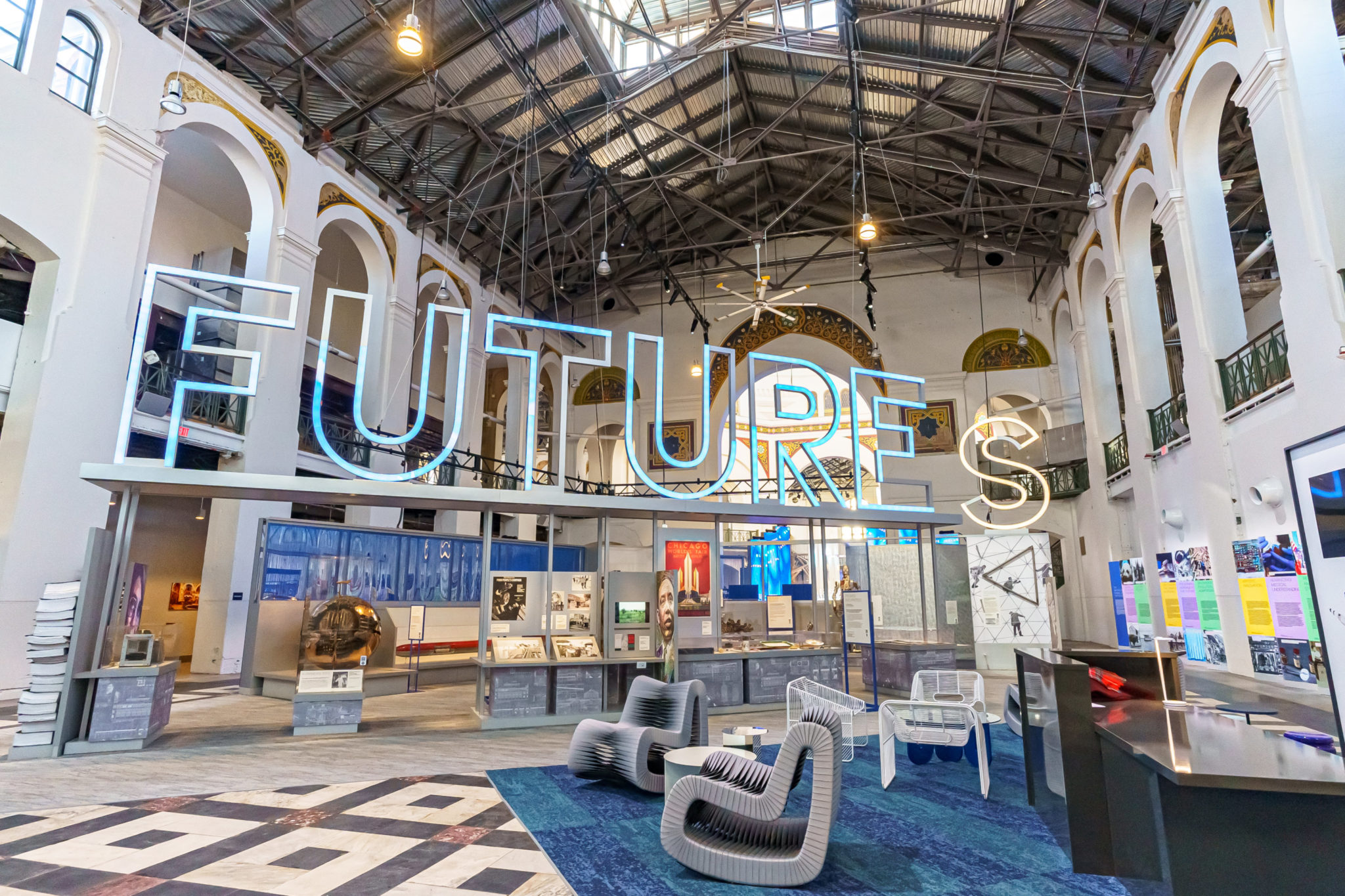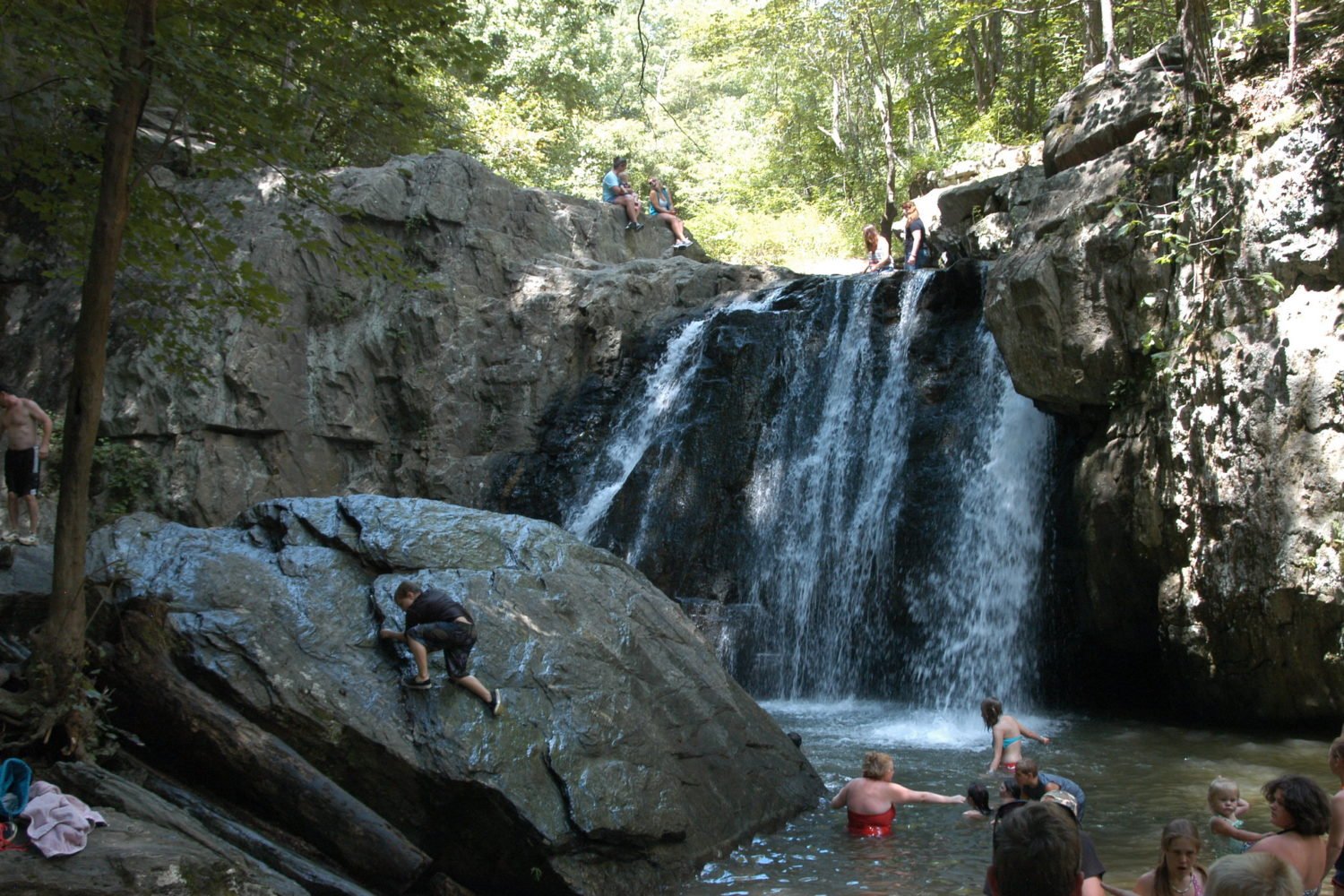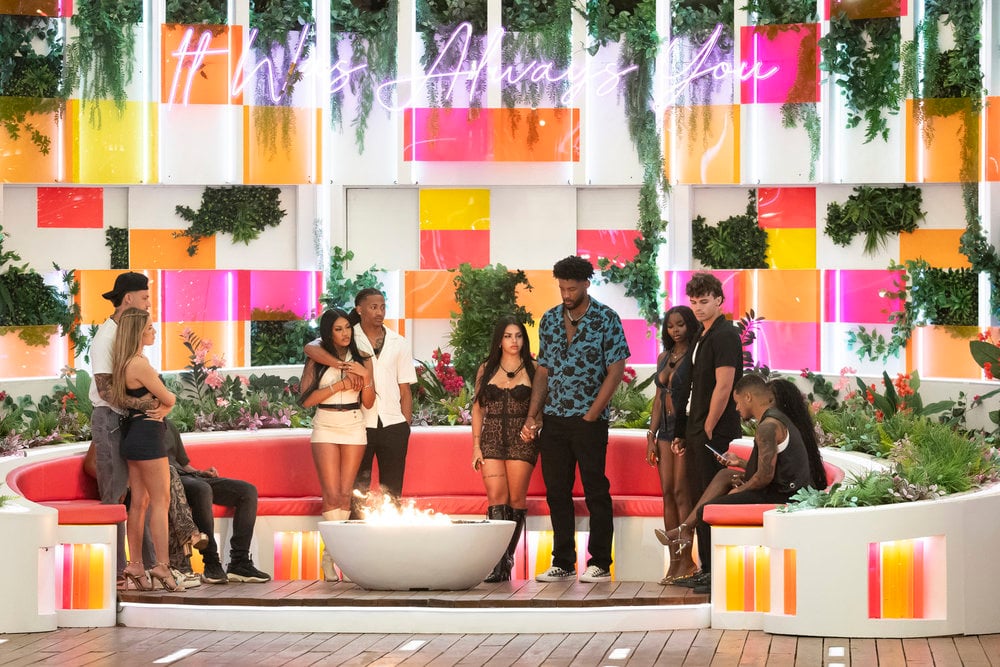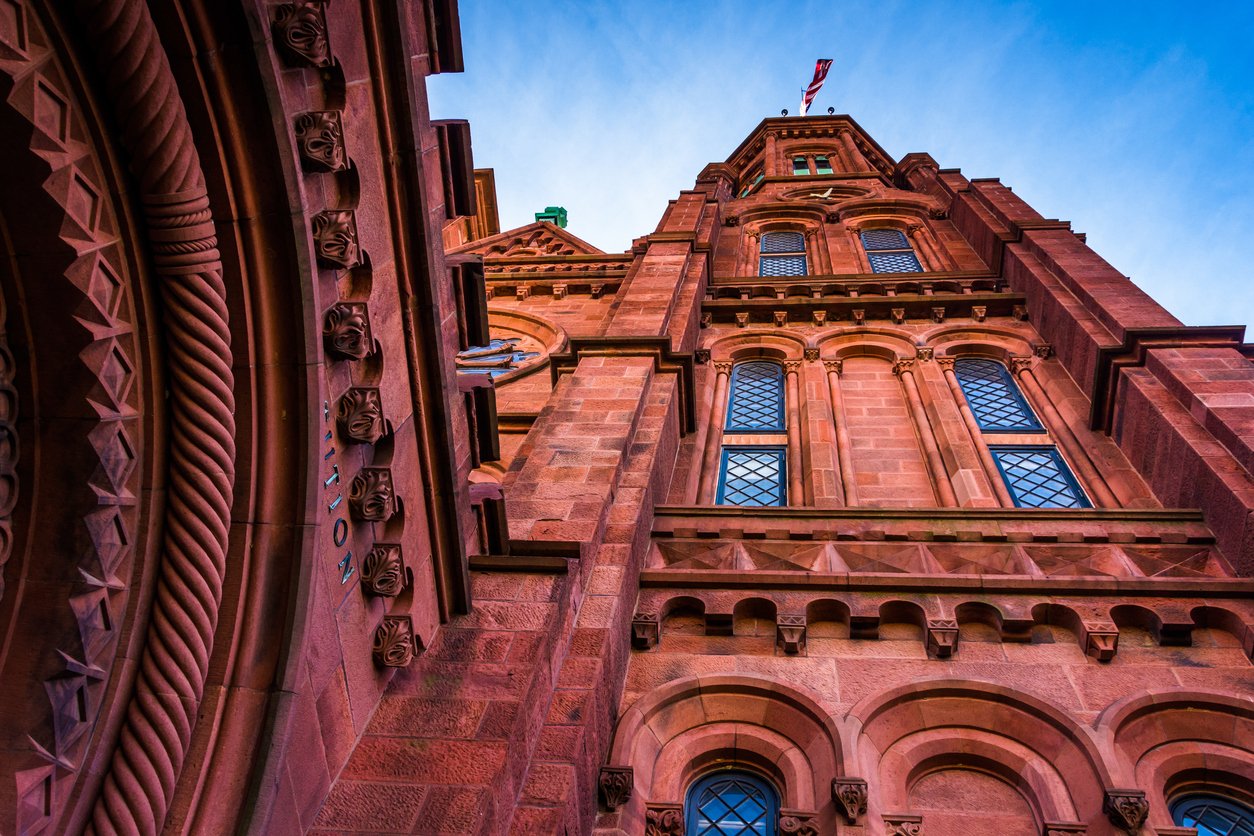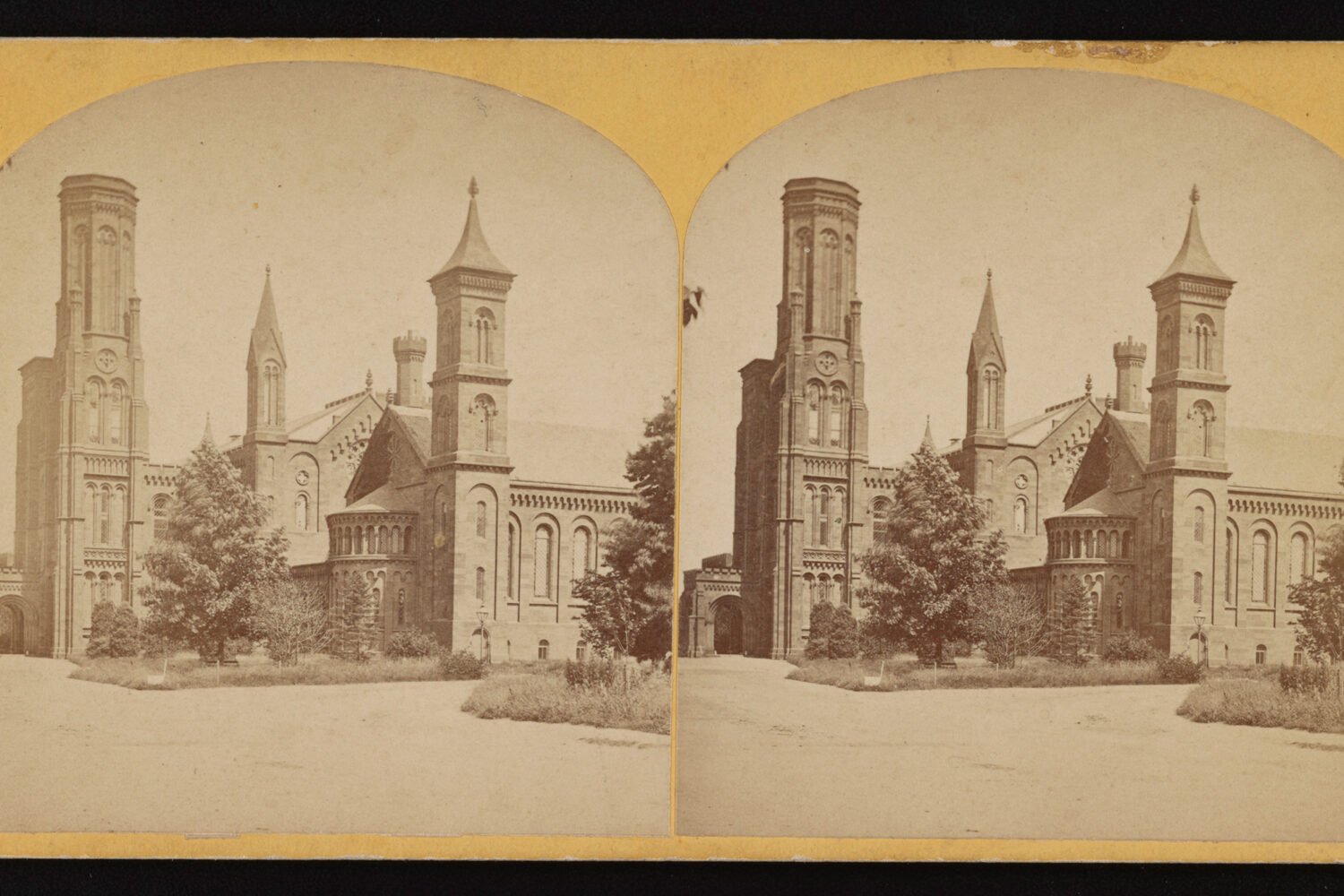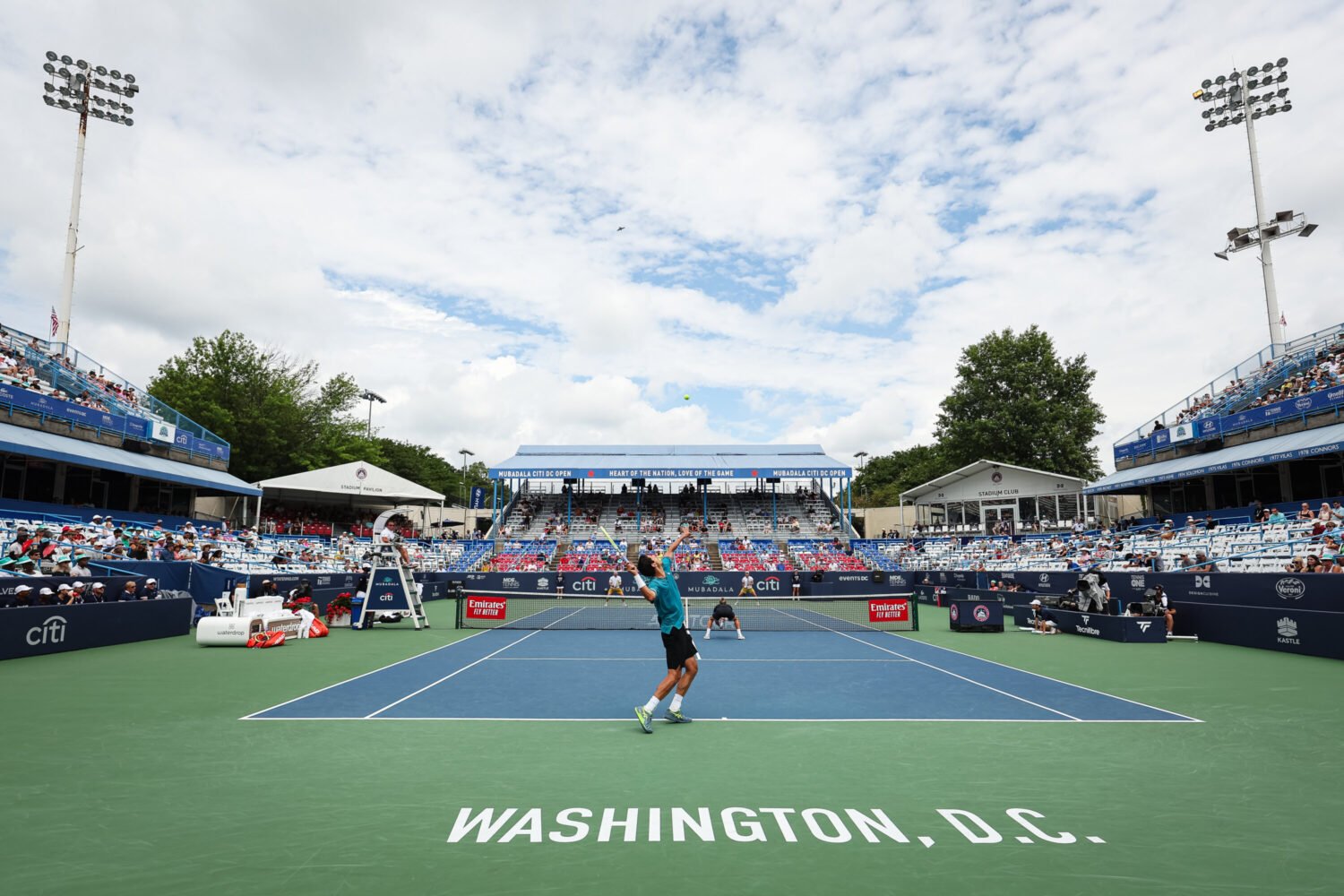The Smithsonian Institution turns 175 this year, and it’s celebrating with the FUTURES exhibition that opens on Saturday. The show, designed by architecture firm Rockwell Group, highlights 150 innovations, technologies, and artifacts that the Smithsonian hopes will inspire people to think about the kind of future they want to live in.
The exhibit will be on display at the Smithsonian’s Arts and Industries Building, which has been closed since 2004. The building underwent a 10-year renovation, in which workers replaced the roof, reinforced the foundation, and replaced all 900 windows. The interior remains the same, with its original flooring and cracked walls. However, the building will undergo a complete renovation once the exhibition ends next year.
With all of the research and collecting the Smithsonian has done over the past 175 years, it would’ve been easy to create an exhibition that looked back on the past. But Arts and Industries director Rachel Goslins says it has never been more important for cultural institutions to speak and engage people in big ideas about what’s on the horizon. “We have so much help from society imagining what could go wrong in the future,” she said at a preview event ahead of the exhibit’s opening. “But we don’t nearly have as much help imagining what could go right.”
As visitors approach the museum, they will be greeted with a shimmering sculpture made of dichroic glass, which was used by NASA in the 1950s and 1960s to protect astronauts and spacecraft from radiation while in space. The installation, created by artist Soo Sunny Park, changes colors when the sun changes position in the sky. Goslins said that the piece looks different to each person who sees it—like the future itself.
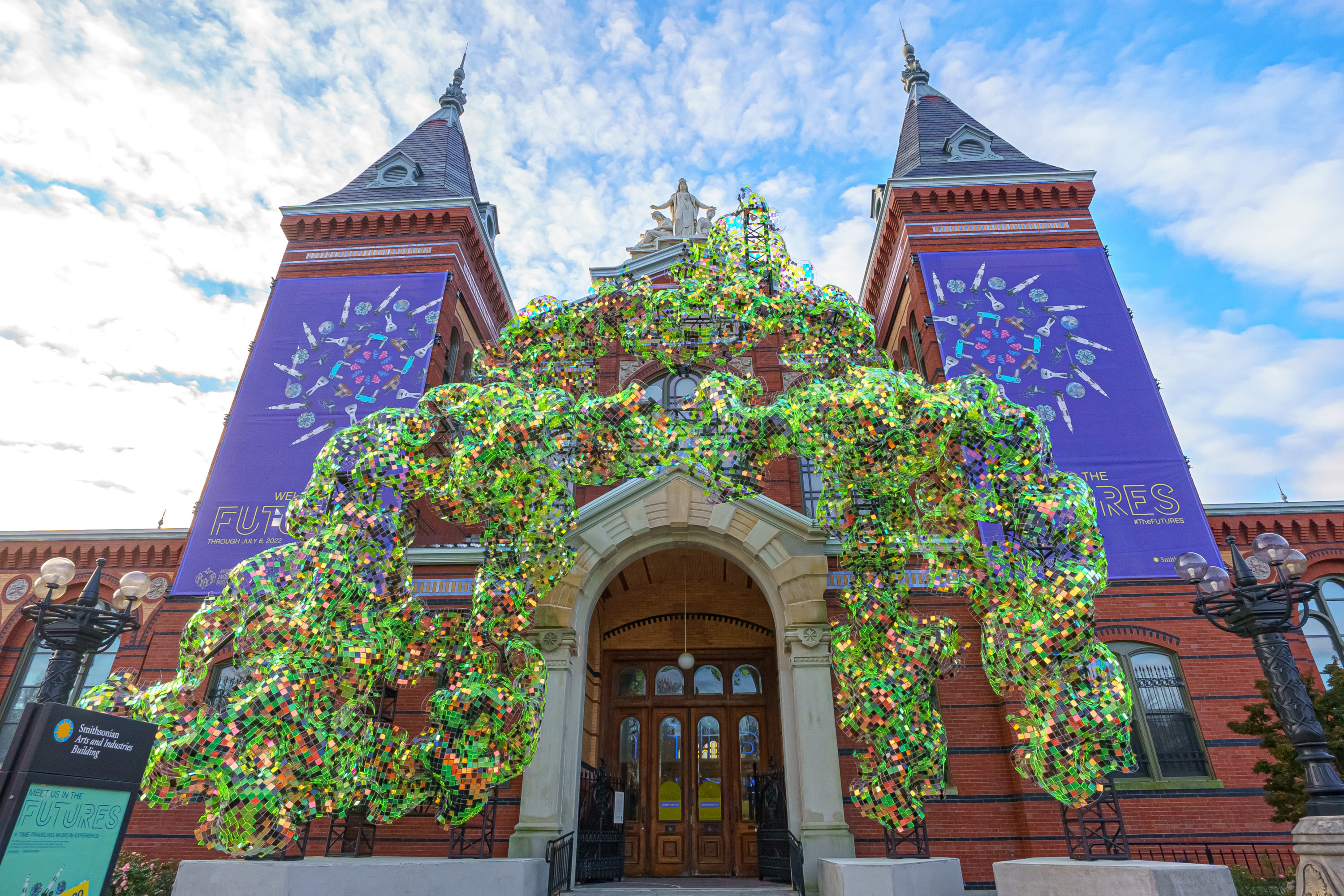
The exhibit first examines the ways people in the past have envisioned the future. Called “Past Futures,” the section displays historical innovations and ideas that have shaped our present, such as Alexander Graham Bell’s telephone and the Bakelizer, which manufactured the world’s first synthetic plastic.
As people move past that section, they will then be prompted to consider how museums may look in the year 2071. Along one wall are posters and stories created by Smithsonian research teams that imagine what exhibits would look like in their own areas of expertise. Some of them envision that the Smithsonian will have a space museum in space and an exhibit on how kids got the right to vote.
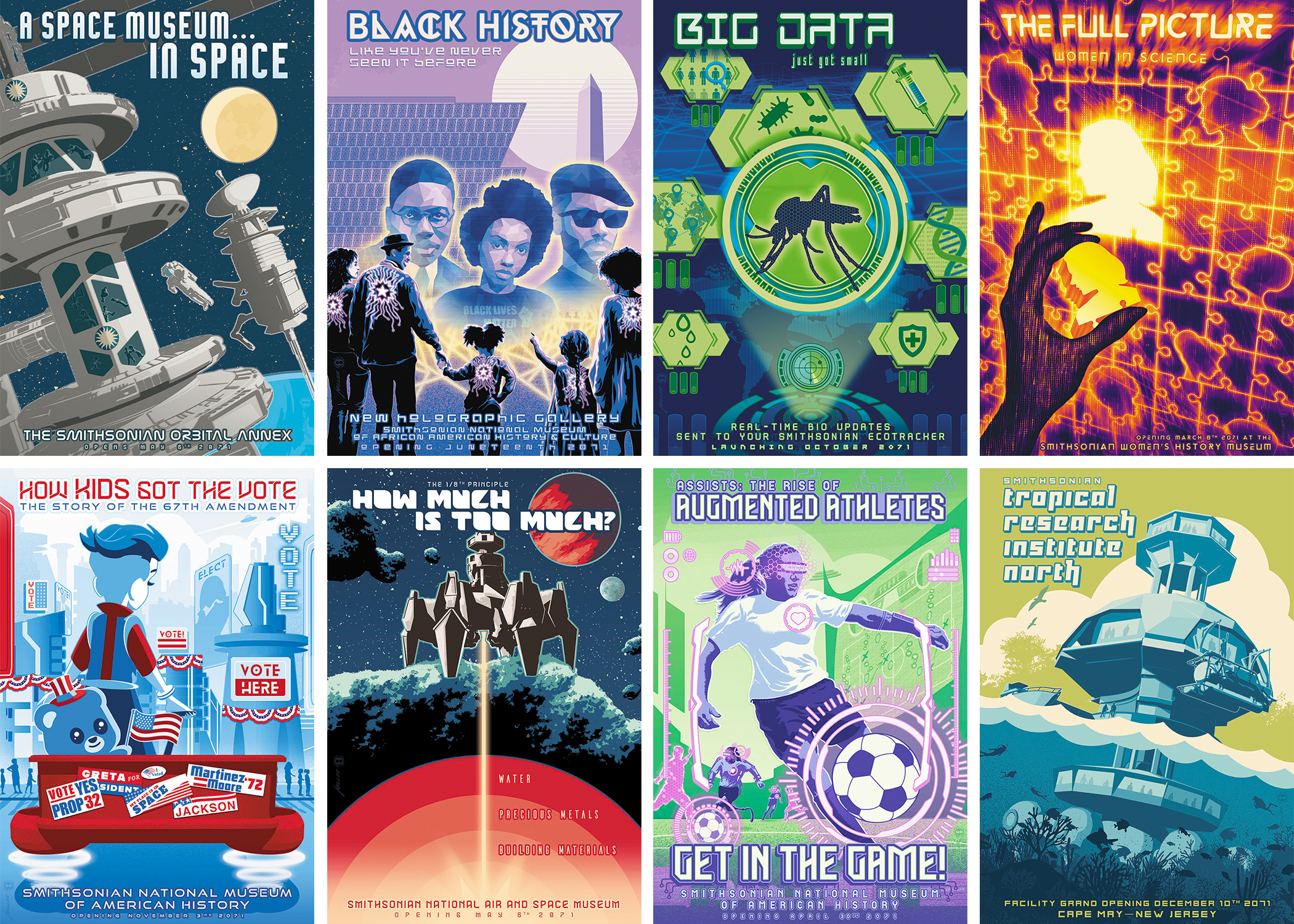
The rotunda of the building features a light sculpture by artist Suchi Reddy called “me + you.” Visitors can describe their visions of the future and the installation will translate the words into colors and patterns.
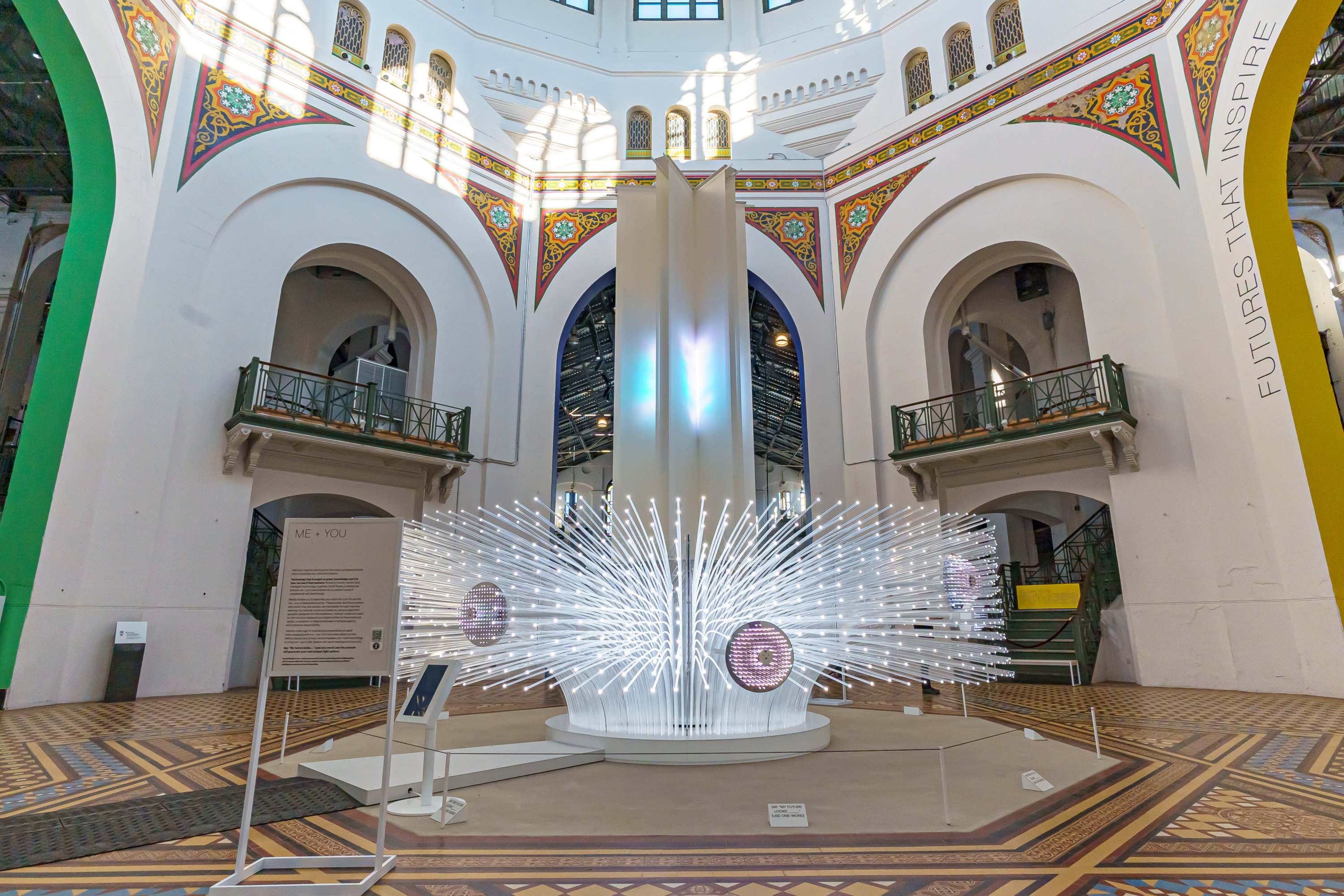
The “Futures that Work” section looks at ideas related to labor. Highlights include coin-operated washing machines that water plants while doing a load of laundry and Virgin’s Hyperloop, which would be able to rapidly transport people across the United States.

Meanwhile, the “Futures that Unite” section proposes new ways for people to connect with each other. Visitors can design their own neighborhood and work with others to solve complex problems, watch a film series about the world everyday people dream, and interact with a genderless voice assistant. Another highlight of this display includes “The Grove” by artist Devan Shimoyama, a memorial adorned with crystals, flowers, and shoes that’s dedicated to the victims of racial violence and the pandemic.
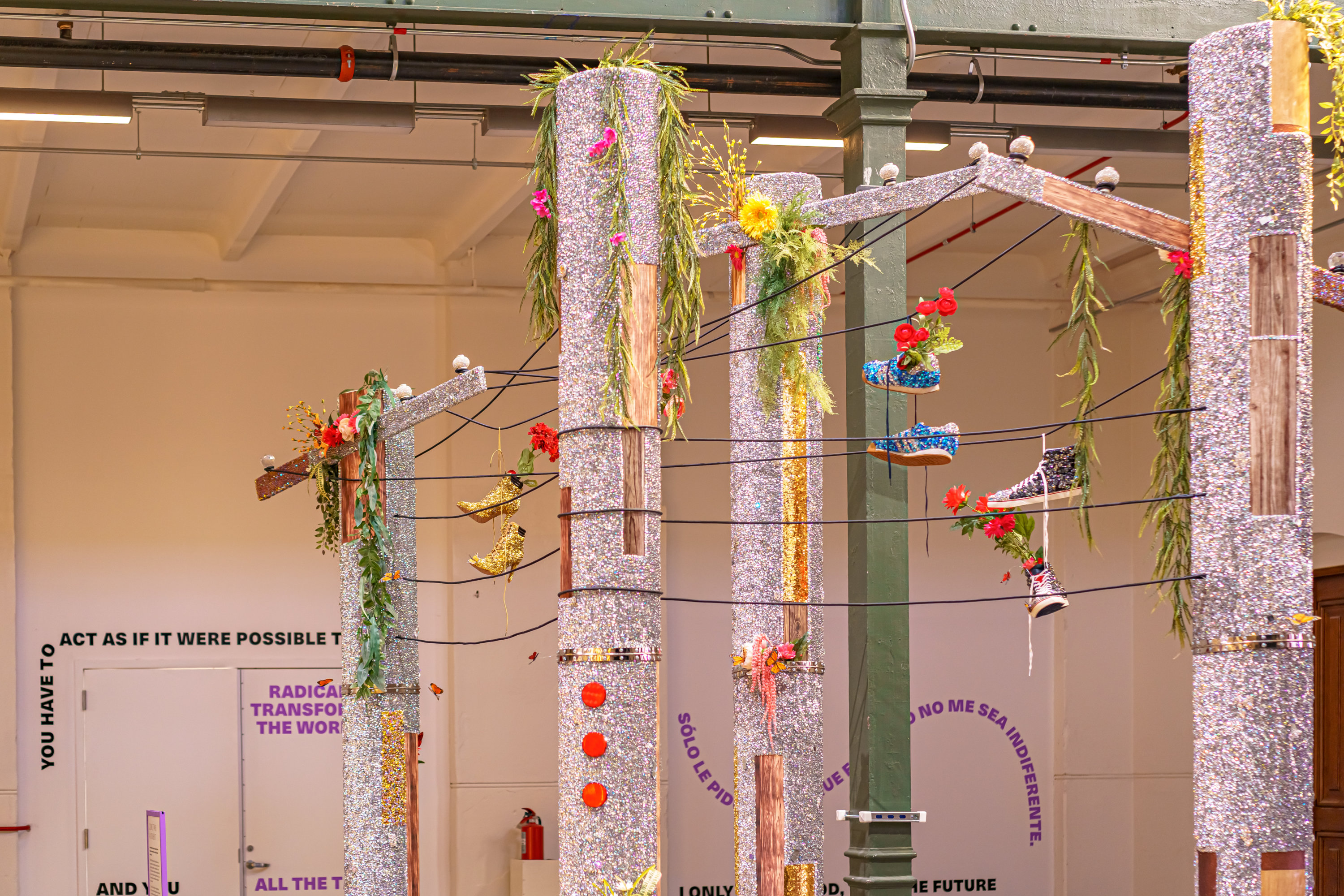
Finally, the “Futures that Inspire” section encourages visitors to imagine new materials, foods, and species. Highlights include a model of a city built on the ocean and the Bell Nexus, a self-driving hybrid-electric taxi that can fly.

The Smithsonian will kick off the exhibition with an opening weekend festival. FUTURES Remixed will feature a live tour of the exhibit from Bill Nye the Science Guy and a roundtable discussion with Nye, Smithsonian head Lonnie G. Bunch III, actor Kal Penn, and musician and biologist Mariah the Scientist. On opening night, there will be a concert with performances from indie-pop trio SHAED, Mariah the Scientist, the cast of the HBO Max series Legendary, and local go-go band Black Alley. The festival will wrap up on Sunday with a family-friendly event filled with pop-up guided activities for kids.
Correction: The article has been updated to reflect that architecture firm Rockwell Group designed the exhibition.

